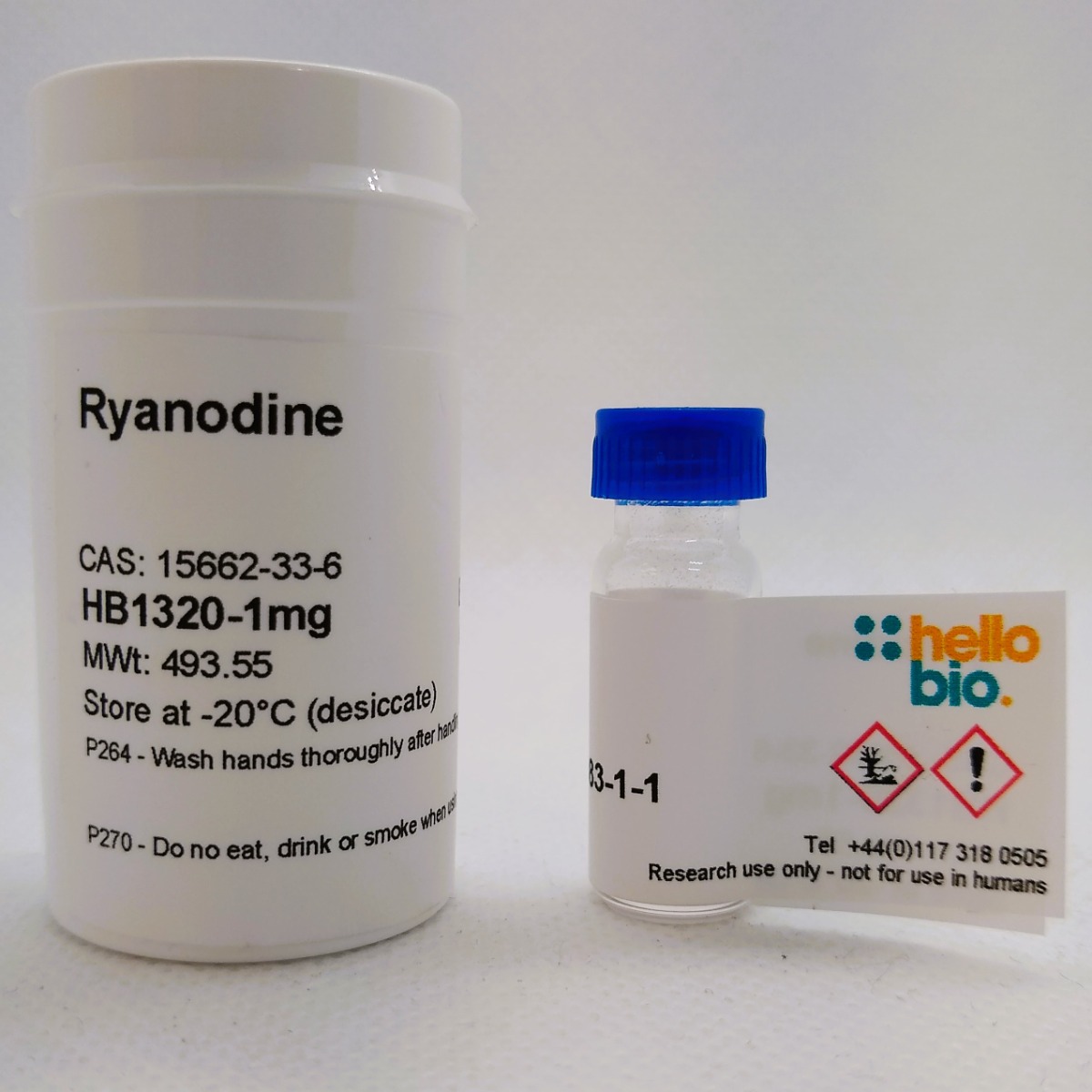The store will not work correctly in the case when cookies are disabled.
JavaScript seems to be disabled in your browser. For the best experience on our site, be sure to turn on Javascript in your browser.
Images Ryanodine product vial image | Hello Bio
Ryanodine product vial image | Hello Bio Biological Data Biological description Potent Ca2+ release inhibitor. Inhibits release from the cardiac and skeletal muscle sarcoplasmic reticulum (IC50 values are 2.8 and 10 nM respectively). Shows actions to slow arrhythmia development in heart failure.
Solubility & Handling Storage instructions -20°C (desiccate)
Solubility overview Soluble in ethanol (10mM) and in DMSO (25mM)
Important This product is for RESEARCH USE ONLY and is not intended for therapeutic or diagnostic use. Not for human or veterinary use.
Chemical Data Chemical name 1H -Pyrrole-2-carboxylic acid, (3S ,4R ,4aR ,6S ,7S ,8R ,8aS ,8bR ,9S ,9aS ) -dodecahydro-4,6,7,8a,8b,9a-hexahydroxy-3,6a,9-tri methyl-7-(1-methylethyl)-6,9-methanobenzo[1,2]pent aleno[1,6-bc ]furan-8-yl ester
Chemical structure
Molecular Formula C25 H35 NO9
PubChem identifier 11317883
SMILES CC(C)[C@@]6(O)C(OC(=O)c1cccn1)[C@]2(O)[C@@]5(O)[C@@]34O[C@@](O)(C[C@@]2(C)[C@@]4(O)CC[C@H](C)[C@H]3O)[C@]56C
Source Extracted from ryania speciosa
InChi InChI=1S/C25H35NO9/c1-12(2)22(31)17(34-16(28)14-7-6-10-26-14)23(32)18(4)11-21(30)19(22,5)25(23,33)24(35-21)15(27)13(3)8-9-20(18,24)29/h6-7,10,12-13,15,17,26-27,29-33H,8-9,11H2,1-5H3/t13-,15+,17+,18-,19+,20-,21-,22+,23+,24+,25+/m0/s1
InChiKey JJSYXNQGLHBRRK-SFEDZAPPSA-N
References for Ryanodine References are publications that support the biological activity of the product
Effects of sarcolemmal Ca(2+) entry, ryanodine function, and kinase inhibitors on a rabbit model of heart failure. Kijtawornrat A et al (2010) Int Heart J 51(4) : 285-90. Ryanodine modification of RyR1 retrogradely affects L-type Ca(2+) channel gating in skeletal muscle. Bannister RA et al (2009) J Muscle Res Cell Motil 30(5-6) : 217-23. The pharmacology of ryanodine and related compounds. Sutko JL et al (1997) Pharmacol Rev 49(1) : 53-98.
Tell us about your publication! What Hello Bio product(s) have you cited?
Captcha Please type the letters and numbers below Submit
Potent Ca2+ release inhibitor
![Ryanodine [15662-33-6] Ryanodine [15662-33-6] Chemical Structure](https://hellobio.com/media/catalog/product//h/b/hb1320.png)






 Understanding purity and quality - a guide for life scientists
Understanding purity and quality - a guide for life scientists

